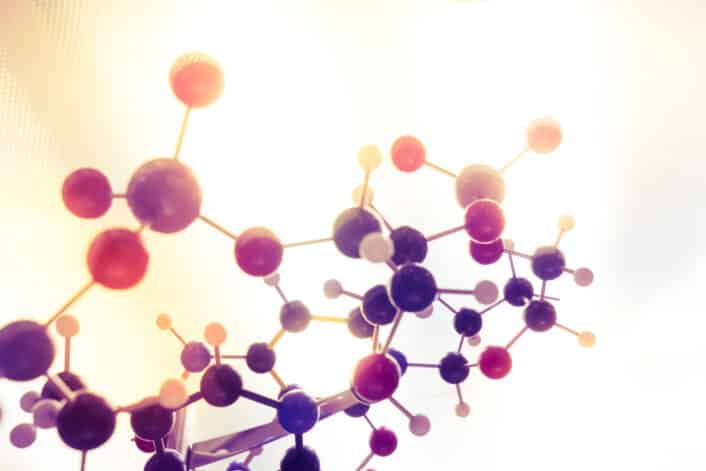

Dihydrolipoamide dehydrogenase (DLD) deficiency is a metabolic disorder that impairs the body’s ability to process certain amino acids and energy substrates. The condition is also known as E3 deficiency or maple syrup urine disease type III. This deficiency arises from mutations in the DLD gene, leading to a malfunctioning DLD enzyme.
DLD deficiency affects multiple enzymatic complexes within the mitochondria, resulting in a wide spectrum of clinical manifestations ranging from lactic acidosis to neurological impairments. Understanding the genetic basis of this condition is crucial for accurate diagnosis, management, and genetic counseling.
The DLD gene, located on chromosome 7q31–q32, encodes the enzyme dihydrolipoamide dehydrogenase (DLDH or E3), a flavoprotein that plays a pivotal role in mitochondrial energy metabolism.
Mitochondria are specialized structures within cells that generate most of the cell’s supply of adenosine triphosphate (ATP). The ATP molecule provides energy for many biological processes. Because of this vital function, mitochondria are often called the “powerhouses” of the cell.
The DLDH enzyme is crucial in the mitochondria because it is a component (known as E3) of multiple enzyme complexes that are essential for converting nutrients into usable energy (cellular respiration).
Let’s take a quick look at some of these complexes as they are going to be relevant later.
Deficiency in DLDH disrupts these metabolic pathways, leading to the accumulation of toxic metabolites.
DLD deficiency is inherited in an autosomal recessive manner. This means that an affected individual inherits two mutated copies of the DLD gene, one from each parent, who are typically carriers without symptoms.
Various types of mutations in the DLD gene can lead to DLD deficiency, including:
Single nucleotide changes result in the substitution of one amino acid for another in the enzyme. A missense mutation is like a typo where one letter is changed, resulting in one building block (amino acid) in a protein being replaced with a different one.
Premature stop codons lead to truncated, non-functional proteins. A nonsense mutation is like a sudden, unexpected period in the middle of a sentence, causing it to stop prematurely.
Alterations affect RNA splicing, potentially resulting in aberrant proteins. Think of the process of making proteins as editing a video. Splice-site mutations are errors in the signals that tell the cell where to cut and join pieces of genetic material (RNA) so that the proper protein can be made.
Addition or loss of nucleotides causing frameshifts and defective proteins. Indels are like adding or removing letters in a sentence without regard for word boundaries. An insertion adds extra letters and a deletion removes some. This can cause a frameshift, meaning the entire way the genetic code is read gets shifted.
Some mutations are more prevalent in certain populations due to a founder effect. The founder effect occurs when a new population is started by a small group of individuals. This causes certain genetic traits to become more common because there’s less genetic diversity.
The G229C mutation in the DLD gene is a missense mutation where the amino acid glycine (Gly) at position 229 is substituted with cysteine (Cys). The G229C mutation disrupts DLD’s participation in key metabolic complexes such as the PDC and the αKGDHc. This mutation has been particularly prevalent in individuals of Ashkenazi Jewish descent.
The E375K mutation in the DLD gene is a missense mutation where the amino acid glutamic acid (E) at position 375 is replaced by lysine (K). Specifically, the E375K mutation impairs the enzyme’s activity within key mitochondrial complexes such as the PDC, theαKGDHc, and the BCKDC. This mutation has been reported in individuals across multiple ethnic groups.
Researchers have found increasing evidence that abnormalities in mitochondria—the energy-producing structures within cells—are present in the brains of patients with Alzheimer’s disease (AD). Specifically, decreased activity of the αKGDHc has been discovered.
This enzyme is highly sensitive to damage from harmful molecules known as reactive oxygen species, making it significant in Alzheimer’s and mitochondrial disease research. In a 2021 research study, scientists sequenced the three genes—OGDH, DLST, and DLD—that encode the αKGDHc subunits, in different brain regions of 11 patients with confirmed AD and in the blood of an additional 35 AD patients.
As a control, they also screened 134 healthy individuals using whole-exome sequencing. Based on the literature and their findings, they believe that the R263H mutation in the DLD gene causing a defective αKGDHc is likely a pathogenic factor in AD. The R263H mutation is a missense mutation where the amino acid arginine (R) at position 263 is replaced by histidine (H).
You may also like: The APOE Gene and Alzheimer’s Disease
The clinical presentation of DLD deficiency is heterogeneous and can be categorized into three main phenotypes based on its onset:
You may also like: How Genes Influence Your Liver Enzyme Levels
There is no known cure for DLD deficiency, and treatment is primarily supportive.
Dietary Management
Supplements
Management of Metabolic Crises
Physical and Occupational Therapy
Experimental Therapies
Dihydrolipoamide dehydrogenase deficiency is a complex metabolic disorder resulting from mutations in the DLD gene. The genetic heterogeneity contributes to a wide range of clinical presentations, making the diagnosis challenging.
Early detection through biochemical and genetic testing is crucial for managing symptoms and improving the quality of life. While current treatments are limited to supportive care, advances in genetic therapies offer hope for more effective interventions in the future.
Genetic counseling remains a cornerstone in helping affected families understand the condition and make informed reproductive choices.


